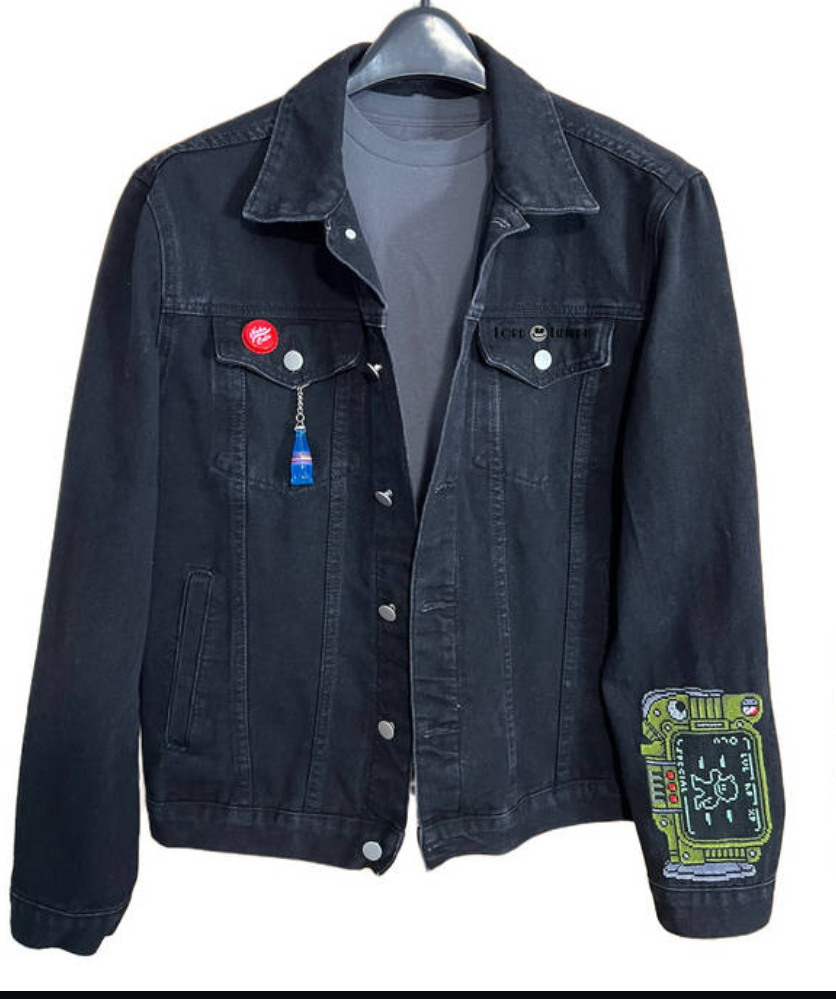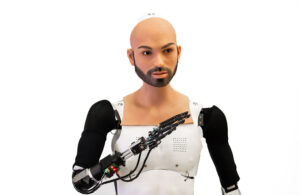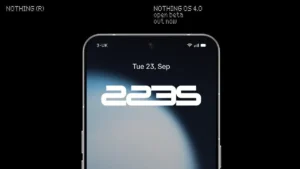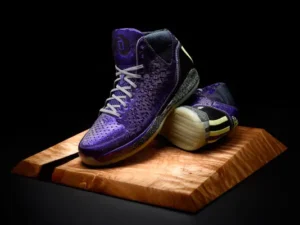In the realm of fan-driven fashion, where nostalgia intersects with DIY craft and digital fandom, few works are as striking as the Fallout Nuka-Cola Cross Stitch Denim Jacket by LordLibidan. It is not merely a denim garment but a wearable canvas—where embroidery and cross-stitch traditions have been radically reimagined to echo the retro-futurist dystopia of Bethesda’s Fallout universe. This piece stands as a couture artifact of speculative storytelling, handcrafted obsession, and cultural remix.
Crafted meticulously through needlepoint, LordLibidan’s jacket transforms a mundane denim outerwear item into a pixel-accurate rendering of the iconic Nuka-Cola poster, fully realized in thousands of tiny X-shaped stitches. The work invites a layered discussion about fan art legitimacy, embroidery’s resurgence as a subcultural medium, and how fashion becomes the site of emotional and imaginative reenactment.
Who Is LordLibidan? A Thread Through Time
LordLibidan is an acclaimed cross-stitch artist renowned for elevating video game iconography and pop cultural ephemera into detailed textile works. Specializing in a pixel-unique, highly disciplined style that mimics digital imagery, LordLibidan gained recognition through a few platforms such as Reddit, where his stitched renditions of 8-bit video game scenes and fictional brands amassed a devoted following.
He operates not only as an artisan but also as a translator of pop culture into traditional craft vocabulary. His work often sits at the intersection of gamification, historical embroidery practice, and contemporary fandom—making him a special voice in the global revival of textile art. The Nuka-Cola Denim Jacket is perhaps his most ambitious and referential project, emblematic of his philosophy that “nostalgia is stitchable.”
The Jacket as Canvas — Material and Motif
At first glance, the denim jacket—distressed, utilitarian, and classic—is the ideal base for such an ambitious embroidery project. Denim, with its heritage of working-class durability and Americana cool, is already charged with socio-historical meaning. Add to it a hyperreal depiction of a faux mid-century soda advertisement, and the garment becomes an archive of cultural contradiction.
The star motif, the Nuka-Cola advertisement, is directly lifted from the in-game visuals of Fallout 4—particularly the 1950s-style pin-up of a female astronaut posed suggestively beside a bottle of the game’s signature soda. LordLibidan’s challenge was not only to replicate this complex image using traditional cross-stitch but to do so with enough fidelity that the jacket read as both a tribute and a triumph.
The color palette—creamy whites, cherry reds, rusted oranges, and nuclear blues—was precisely calculated, echoing the screen tones used in the video game while compensating for the tactile quality of cotton thread. Over 80 thread colors were utilized, some blended in real time using thread-blending techniques rarely seen outside of professional embroidery guilds.
Cross Stitch in a Post-Apocalyptic Context
Cross stitch, long relegated to the realm of domestic crafts, has found a surprising resurgence within fandom cultures. Once associated with samplers, floral borders, and maternal keepsakes, it now appears in subversive formats—featuring everything from expletives to Star Wars quotes. LordLibidan’s work, however, refrains from irony; it reinvests sincerity into craft while honoring the legacy of its medium.
The juxtaposition of this method with the Fallout universe is profoundly symbolic. The game series depicts a world where post-nuclear societies cobble together the remnants of mid-century Americana to survive—a world of rusted Coke machines, broken jukeboxes, and vault advertisements for cheerful dystopias. Cross stitch, with its deliberate pacing and labor-intensive nature, mirrors this ethos: survival through skill, storytelling through salvage.
Moreover, in a culture increasingly interested in sustainability and slow fashion, embroidery on clothing becomes a form of resistance against throwaway consumerism. LordLibidan’s jacket, taking hundreds of hours to complete, becomes a counterpoint to fast fashion and a wearable shrine to imaginative labor.
Crafting Fandom — Between Obsession and Artistry
What elevates this jacket beyond cosplay or merchandise is its approach to craftsmanship. LordLibidan does not merely decorate the jacket; he transforms it into a narrative artifact, weaving fiction into fashion with architectural precision. The stitches are not loose interpretations but methodically placed pixels, each one building toward an image that, when viewed at a distance, could easily be mistaken for a digital print.
This level of fan dedication teeters on obsession, and it is that obsessive quality which earns the work its artful status. It blurs the boundaries between folk art, fine art, and fan art—categories historically kept apart. In 2020s and 2030s culture, however, those walls have largely collapsed. Pieces like this are now exhibited in galleries, featured in museum retrospectives, and written into academic discourse on “affective labor.”
By combining the slow, painstaking practice of needlecraft with fast-paced digital iconography, LordLibidan forges a new genre: speculative textile art. It’s not nostalgia for its own sake—it’s a practice that reclaims emotional and aesthetic agency within media-saturated worlds.
Threads of Critique — Labor, Gender, and the Domestic
Another critical angle to consider is how LordLibidan’s jacket engages with themes of gender and labor. Embroidery has long been feminized labor—domestic, decorative, and unpaid. To see it applied to a masculine-coded item like a rugged denim jacket—and used to depict a hyper-feminized, sci-fi pin-up girl—creates an uncomfortable inversion of these roles.
This tension is amplified by the Fallout brand’s own critique of gender and commercialism. Nuka-Cola’s in-game ads frequently parody mid-century sexism while reproducing its tropes. LordLibidan’s reproduction doesn’t sanitize these themes; it restages them with unsettling beauty, asking the viewer to reconcile hand-stitched love with critical nostalgia.
It’s also notable that the jacket represents hundreds of hours of unpaid labor—done not for profit, but for love. This speaks to the way fan communities have historically functioned: as sites of communal labor, gift economies, and shared passion. The jacket is not for sale; it exists outside of traditional commodity logic.
The Internet as Gallery — Documentation and Reception
LordLibidan’s documentation of the jacket’s construction has become nearly as important as the object itself. Through high-resolution photography, process videos, and blog updates, he invites audiences into the meditative reality of craft. Viewers witness not just the finished product but the raw, honest discipline that made it possible.
The internet serves as both gallery and archive, enabling wide distribution without physical exhibition. In this sense, the Nuka-Cola Jacket is a digital textile—its real impact occurs not only in person but in scrolls, shares, pins, and reposts. Its virality helped elevate embroidery in online craft spaces and prompted imitators, homages, and cross-disciplinary collaborations.
The jacket has since become a touchstone in the digital craft revival movement—used in think pieces, cited in craft zines, and admired by designers who seek to merge narrative with garment.
Cross-Stitch Couture and the Future of Wearable Stories
The Fallout Nuka-Cola Cross Stitch Denim Jacket is more than a fan-made homage. It’s a prototype for a new kind of garment: one that carries with it the permanence of tradition, the immediacy of fandom, and the intellectual engagement of critique. It demonstrates that fashion does not need to originate from runways or luxury ateliers to command attention and demand interpretation.
In many ways, this jacket sits comfortably within a lineage of wearable art, from the embroidered protest jackets of the 1960s to the hand-painted leathers of punk’s DIY ethos. But it pushes even further by integrating high-fidelity visual storytelling into a laborious textile tradition, turning every inch of thread into an act of worldbuilding.
LordLibidan’s work ultimately proposes that the future of fashion might not lie in faster production cycles or algorithmic recommendations—but in meaningful slowness, pixel-by-pixel memory, and the quiet radicalism of craft.
The Apocalypse Will Be Embroidered
LordLibidan’s Fallout Nuka-Cola Cross Stitch Denim Jacket is a paradox: handmade in a time of automation, nostalgic in a genre obsessed with future ruins, jovial in a medium burdened by domestic histories. And yet, it all works.
It repositions embroidery from relic to rebellion, from grandmother’s sampler to fan-fueled statement piece. In doing so, it joins a lineage of fashion that is not about status or speed, but about storytelling. With every careful stitch, the jacket rewrites who gets to be remembered, who gets to create, and what kind of threads we leave behind in history’s wake.
In the universe of Fallout, survivors salvage scraps and turn them into life. In our universe, LordLibidan salvages craft and turns it into legacy.
No comments yet.









